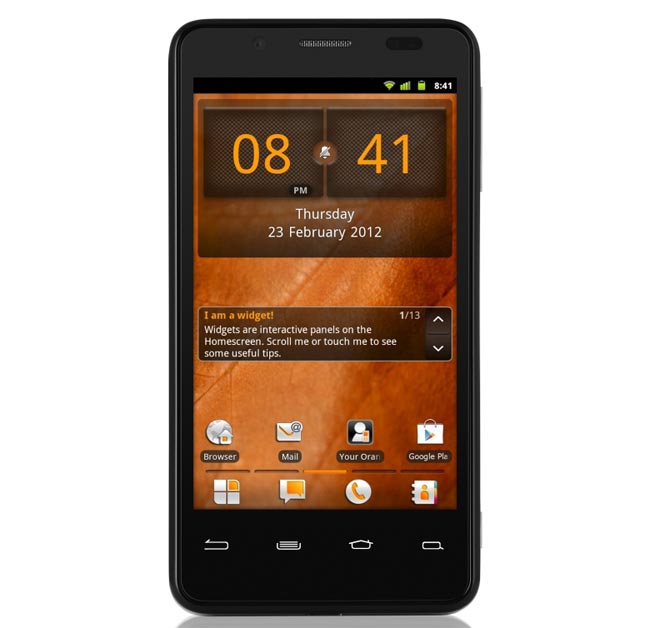Making a debut in the smartphone manufacturing world must be nerve racking, even if you do know your AMOLED from your APP. Orange, needless to say, have more experience in the mobile phone world than most of us do.
However, it’s still intriguing to note that they worked in tandem with the PC processing lords Intel to bring us their debut smartphone: the San Diego.
Whilst many were expecting Intel’s intervention to lead to a slavering, chomping processing demon, what we’ve actually ended up with is aimed squarely at the middle market. There’s no attempt at competing with Samsung’s quad-core or Apple’s Siri.
San diego is simply a smartphone for those who don’t really want the bells or whistles. Fortunately, it’s priced as such, available for around $25 on two-year deals. So, do the budgets mean lower quality, or is the future bright?

The Visuals
First of all, it’s worth discussing the visuals, or rather the lack of them. The truth is that the San Diego is as close to a standard smartphone design as you’ll find anywhere.
Even if you’ve not seen a photo of it, you already know what it looks like: trust us. Black, average-sized and with a typical screen, there’s virtually nothing here that’s anything less than bog-standard.
The only out-of-the-ordinary feature is the rubberized finish on the back for those of us who frequently drop things. Lots of things. In the end, the San Diego does nothing visually wrong: if you’re just not that fussed about the aesthetic side of the design, it’ll do you proud.
The screen itself is also perfectly proficient, coming in at 4.03 inches and offering a 1024×600 resolution. Whilst it obviously isn’t going to stand up in an A-to-B test with one of Samsung’s critically lauded AMOLED screens, it remains more than watchable if you’re someone who uses the video viewing facility of your phone more than the average.
It will also comfortably handle the various distractions of YouTube, net browsing and gaming with little difficulty.
The Processor
What, then, of the Intel-aided processor? Much is, after all, expected from a firm that have far more experience in processing than most of their smartphone competitors (and in the case of Samsung have in fact been working with them in the broader computing market). Is the Atom a triumph, a disaster, or will it split (heh, heh) the users? Well, the truth is that it’s fine. It doesn’t do anything spectacular, but it’ll be more than capable of dealing with the majority of tasks that it’s asked to do.
There is, unsurprisingly, a bit of lag and slow down if you go overboard on the multi-tasking. However, this is the case with most models that aren’t at least 30% more expensive. If you want a netbook in a phone, then look elsewhere.
In the end, Orange and Intel’s debut smartphone is largely a success. It’s not there to compete with an iPhone 4S or a Galaxy SIII – that will, doubtless, come in the future. What it does do is offer an efficient and solid journeyman of a phone, designed to be used by your average Joe who doesn’t want to annoy their bank manager. Excellent work.
Charlotte Daniels is a freelance writer and technology fan working in association with FactoryFast Online Shopping.

Hi Charlotte
Not really sure where I stand on this phone after reading your review. If it isn’t trying to compete with samsungs top end phones and the I phone then there are so many other smart phones lower down the scale of which Samsung have several. Where is the draw to buy it. Surely in the market today you need something to make you stand out.
Very interesting thanks lee
I can work with any phone as long as I can get rid of this LG fone that is really giving me a hard time.